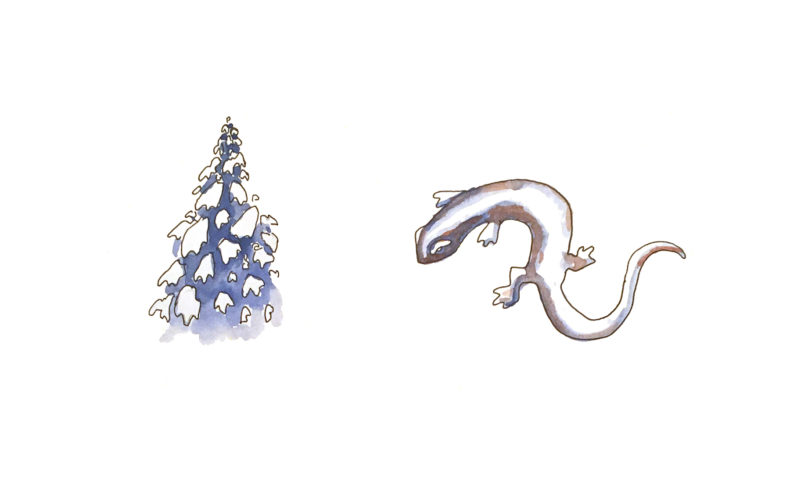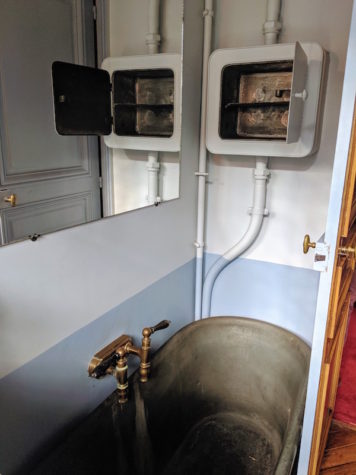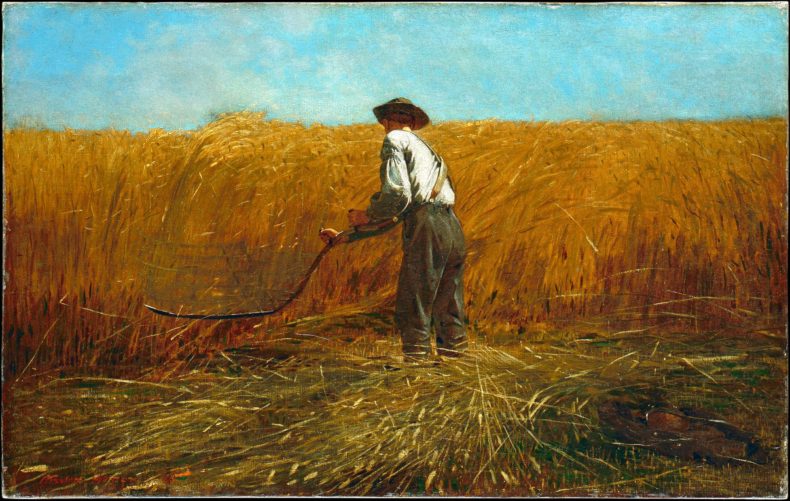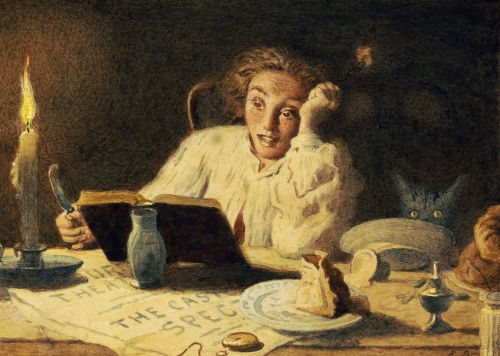Some things are sisters, if you know how to look at them
like

a wildfire sun and a new penny
like

snowy boughs and salamander feet
Continue readingSome things are sisters, if you know how to look at them
like

a wildfire sun and a new penny
like

snowy boughs and salamander feet
Continue reading
A few months ago, I visited the Pasteur Institute, a research center in Paris dedicated to the prevention and treatment of infectious diseases. The trip included a tour of the apartment and crypt of Louis Pasteur, the 19th century French chemist and microbiologist who developed vaccines against rabies and anthrax.
My favorite part of the tour was Pasteur’s bathroom. I thoroughly enjoyed imagining Pasteur splashing about in his porcelain basin, or soaking in the bathtub supplied with hot water from impressively modern plumbing (for the 1800s). It must have been nice to take a hot bath after a long day harvesting spinal cords from rabid rabbits.

From the rabbit spinal cords, Pasteur extracted a weakened version of the rabies virus which he used to develop a rabies vaccine. In his crypt, where he is buried with his wife, gilt mosaics depict the rabbits and dogs Pasteur used in his experiments, as well as a 9 year-old boy who received the first human dose of the vaccine, after being mauled by a rabid dog.
Continue reading
The campus of the National Institutes of Health is in Bethesda, Md. In the 1930s, the kernel of today’s NIH was part of “Tree Tops,” the estate of Mr. and Mrs. Luke I. Wilson. It has lots of lovely old brick buildings and squeezed-in bits of lawn. Lots of nice big trees, too.
One day in late October, I was on the NIH campus, spending the day at a meeting where my job was to sit at the end of the long table and take notes. (The life of a science writer is not always full of glamour.) At lunchtime, I guided several of the meeting’s attendees to the nearest cafeteria.
In front of NIH’s Building 1, I stopped for this: A carpet of acorns along the edge of the sidewalk. Oaks and some other tree species do something called “masting”–they make few or no seeds some years, and throw all of their babies on the ground at once in other years. This is thought to help them avoid predators; the squirrels that run around the NIH campus can eat a lot of acorns, but not this many acorns.
Continue reading
I first wrote about our old, scared dog five years ago in the summer. He’d had a hard life before he got to us, and as he got older, he seemed to get more and more anxious. Last month while we were traveling, we got a call from our dear vet that it was time. Here’s to Hamish–may he have nothing to fear anymore.
These are the dog days. Hot as a dog, lazy as a dog, wanting to curl up and take naps like a dog. Please, let us lie, sleeping like them, on these summer afternoons.
But the phrase didn’t originate from the habits of our earthly canine companions. Instead, it came from Sirius, the dog star. In July and early August, Sirius rises and sets with the sun. People once thought that the combined power of our daytime star and the brightest one in our night sky brought the full heat of summer.
Here below, our own dog star’s light has started to dim. We got him from a rescue group nearly six years ago. He’s a strange brew of Labrador and possibly Great Dane—100 pounds with an enormous head—and somewhere between eight and ten years old. We might be seeing the shine from Sirius, 8.7 light years away, from around the time he was born.
Continue reading
The inevitable knock came one afternoon this September — the tail of Spokane summer, the season of drought and grasshoppers. My landlord stood on the stoop, placid and patient as a mountain lion, shiny black SUV idling in my — his — driveway.
How’s it going? I asked, attempting nonchalance.
He took off his sunglasses. Well, I’ve been better. Then he handed me the Notice to Vacate.
It was, truthfully, a well-earned eviction. When Elise and I had moved into our rental, a two-bedroom with a capacious back yard, a year earlier, we’d been given just one inviolable command: keep the grass looking sharp. Let the plumbing rust, the shutters slough off, the paint peel, you name it — but the lawn, our landlord instructed, was to remain sacrosanct, as verdant and groomed as the greens at Augusta.
Aesthetically, the request was reasonable: It was only natural our landlord would want his property to match the others on our leafy street. Climatically, though, it was absurd. Spokane gets around 16 inches of precipitation per year, less than half the national average. A lawn, in our semi-arid corner of the Northwest, is an extravagance. Each evening, as I watched the sprinklers vomit water over our pointless, decorative crop, I burned with environmental shame — whatever you call the hydrologic equivalent of flygskam.
And, fine, it also just came to feel like a hell of a lot of work: Who’d voluntarily spend even twenty minutes on a Saturday afternoon shoving around a deafening John Deere?
After a few months, we began to let the lawn slide. Skilled self-justifiers, we recast our laziness as civil disobedience. Burn your hoses! Scrap your mowers! We would, we vowed, create an urban jungle through benign neglect.
Continue reading
Sometime in the 1920s, somewhere in France.
A young girl from an influential middle-class French family had been found in a field, stabbed to death. There was no obvious perpetrator. The police rounded up the usual suspects – which is to say, immigrants – and found a Jewish door-to-door salesman who had been in the area at the time of the crime. Trouble was, there was no actual evidence linking him to her murder.
But the police wanted him for the crime anyway, so they hit on a bold new approach. They took advantage of a hot new technology called “cinema”. Specifically, they decided to try the world’s first filmed reconstruction of a crime. They found an actress to play the victim and somehow convinced their suspect to play the part of the murderer, complete with a knife, pretending to stab her with it in front of the camera; then they showed the flickering silent film to a jury. The hapless man was convicted. “Because the jury had seen it happen,” says Burkhardt Schafer, professor of computational legal theory at the University of Edinburgh. “It was just the power of the visual.”
Continue reading
A couple of months ago, my husband and I drove into the Sonoran desert. We were in pursuit of the weird, heading for a mountain celebrating God’s love and constructed almost entirely out of latex paint. We left Palm Springs and drove south toward the Salton Sea.
Continue reading Back before I was an official LWONer, I was a Guest LWONer, and this is one of the pieces I wrote in that capacity. Because yoga is indeed a forever practice, it seems just as relevant now as back in 2014. Although, full disclosure, I do more Zumba these days than yoga–because getting older means one needs to jump around more to stay awake. But anyway, yoga is still my go-to when I need to wring out some rag water. Namaste.
Back before I was an official LWONer, I was a Guest LWONer, and this is one of the pieces I wrote in that capacity. Because yoga is indeed a forever practice, it seems just as relevant now as back in 2014. Although, full disclosure, I do more Zumba these days than yoga–because getting older means one needs to jump around more to stay awake. But anyway, yoga is still my go-to when I need to wring out some rag water. Namaste.